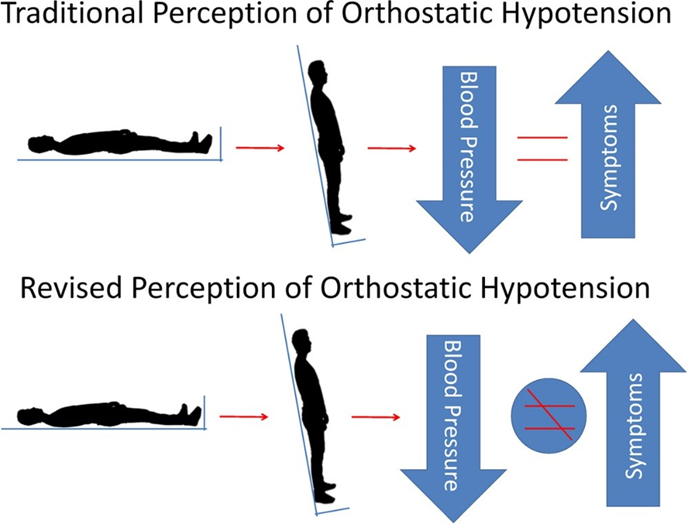When performing blood pressure measurements to assess for orthostatic hypotension, which action should the nurse implement first?
Record the client's pulse rate and rhythm.
Assist the client to stand at the bedside.
Apply the blood pressure cuff securely.
Position the client supine for a few minutes.
The Correct Answer is D
Choice A reason: Recording the client's pulse rate and rhythm is part of the assessment, but it is not the first action to take when assessing for orthostatic hypotension.
Choice B reason: Assisting the client to stand is part of the assessment process, but it should be done after the initial blood pressure and pulse have been measured while the client is supine.
Choice C reason: Applying the blood pressure cuff securely is necessary for an accurate reading, but it is not the first step in the process of assessing for orthostatic hypotension.
Choice D reason: The first action is to position the client supine for a few minutes before taking the initial blood pressure and pulse measurements, as this provides a baseline for comparison when the client stands.

Nursing Test Bank
Naxlex Comprehensive Predictor Exams
Related Questions
Correct Answer is D
Explanation
The correct answer is choice D. Paper mask and gown.
Choice A rationale:
The stethoscope is not typically placed in a biohazard bag. It is cleaned and disinfected after each use, especially when used with a patient with an infectious disease like MRSA.
Choice B rationale:
Bed linens are usually placed in a designated linen bag, not a biohazard bag, even when the patient has an infectious disease. The linens are then laundered according to the healthcare facility’s infection control guidelines.
Choice C rationale:
A sputum specimen is typically placed in a designated specimen container, not a biohazard bag. The container is then sent to the lab for analysis.
Choice D rationale:
The paper mask and gown used while caring for a patient with MRSA should be placed in a designated biohazard bag before being removed from the room. This is because these items may have come into contact with the bacteria and could potentially spread the infection.
Correct Answer is B
Explanation
Choice A reason: While unpleasant odor can indicate poor oral hygiene or other health issues, it is not as urgent as some other findings.
Choice B reason: White patches on the mucosa can indicate an infection such as oral thrush, which requires medical treatment, making it the most important finding to act upon.
Choice C reason: A receding gumline is a concern for dental health but does not typically require immediate action.
Choice D reason: Discoloration of teeth can indicate various issues, including dietary habits or decay, but is not as immediately concerning as white patches on the mucosa. Bolded text indicates the correct answers and important information.
Whether you are a student looking to ace your exams or a practicing nurse seeking to enhance your expertise , our nursing education contents will empower you with the confidence and competence to make a difference in the lives of patients and become a respected leader in the healthcare field.
Visit Naxlex, invest in your future and unlock endless possibilities with our unparalleled nursing education contents today
Report Wrong Answer on the Current Question
Do you disagree with the answer? If yes, what is your expected answer? Explain.
Kindly be descriptive with the issue you are facing.
